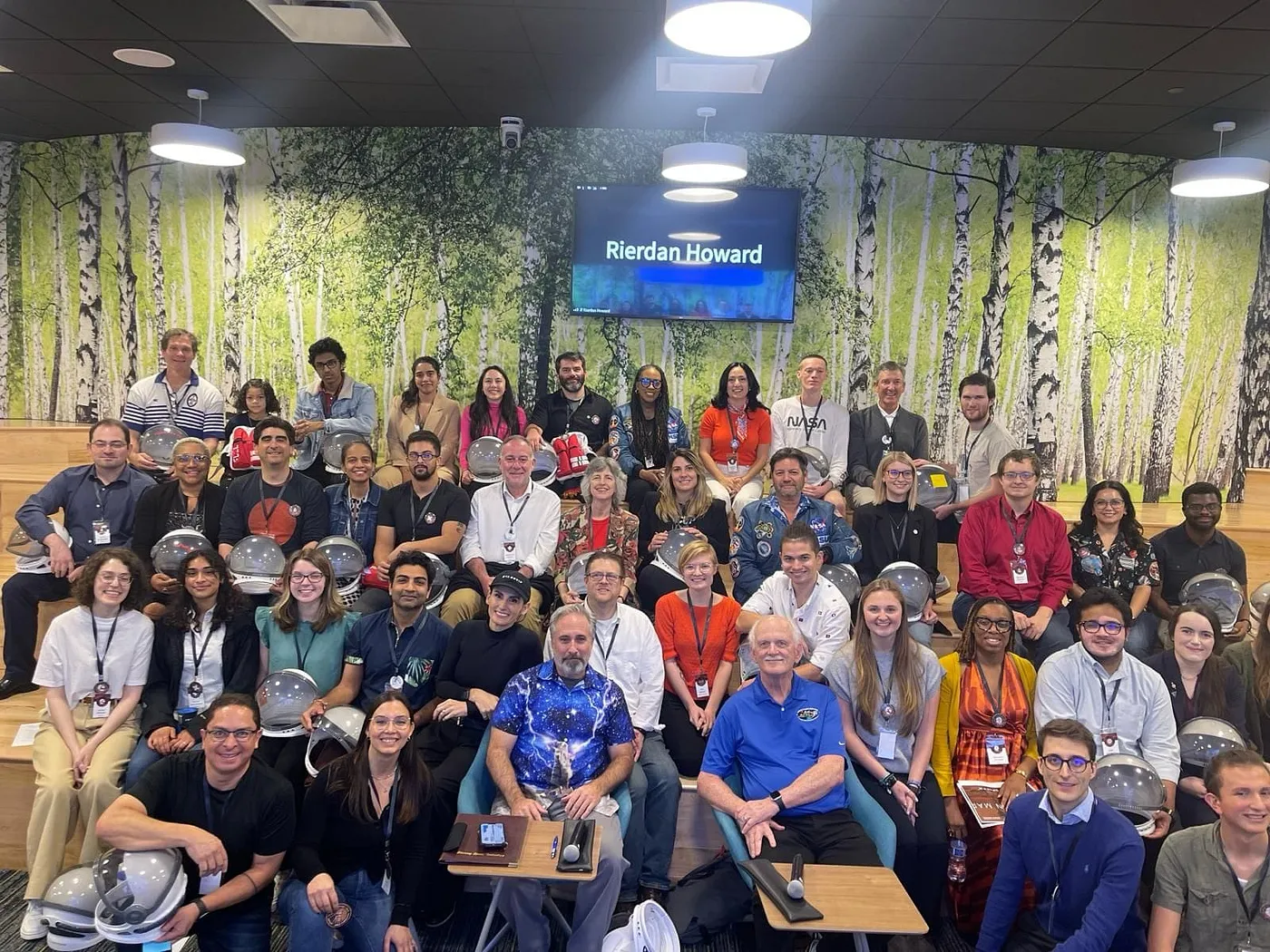Josh Habka’s personal reflection and summary from the “Life on Mars” simulation, a three-day hackathon held by the Space Foundation.
On January 26, 2049, 35 “Martians,” including myself, landed on the simulated red planet aboard six SpaceX Starship vehicles. Our mission was to establish and sustain the first and largest habitat ever on Mars, a daunting 225 million kilometers away from Earth. This ambitious endeavor was part of the Life on Mars Experience, a three-day in-person simulation organized by the Space Foundation and held at the Nova Southeastern University Alan B. Levan | NSU Broward Center of Innovation in Fort Lauderdale, Florida.
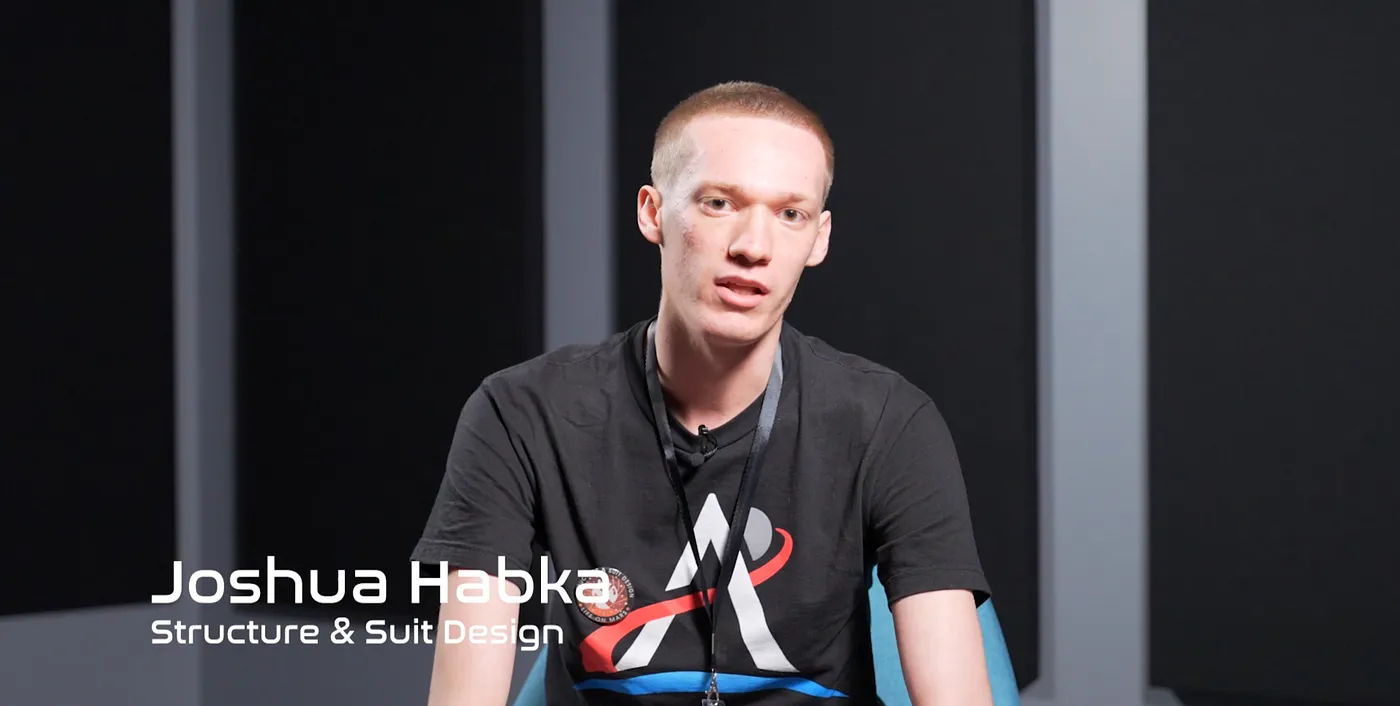
The simulation was designed as an interactive, fast-paced hackathon to explore potential methods for colonizing Mars. Our team, along with five others, tackled different aspects of this monumental mission.
The Teams and Their Missions
- Habitat Operations: Tasked with designing and implementing transportation and energy systems infrastructure.
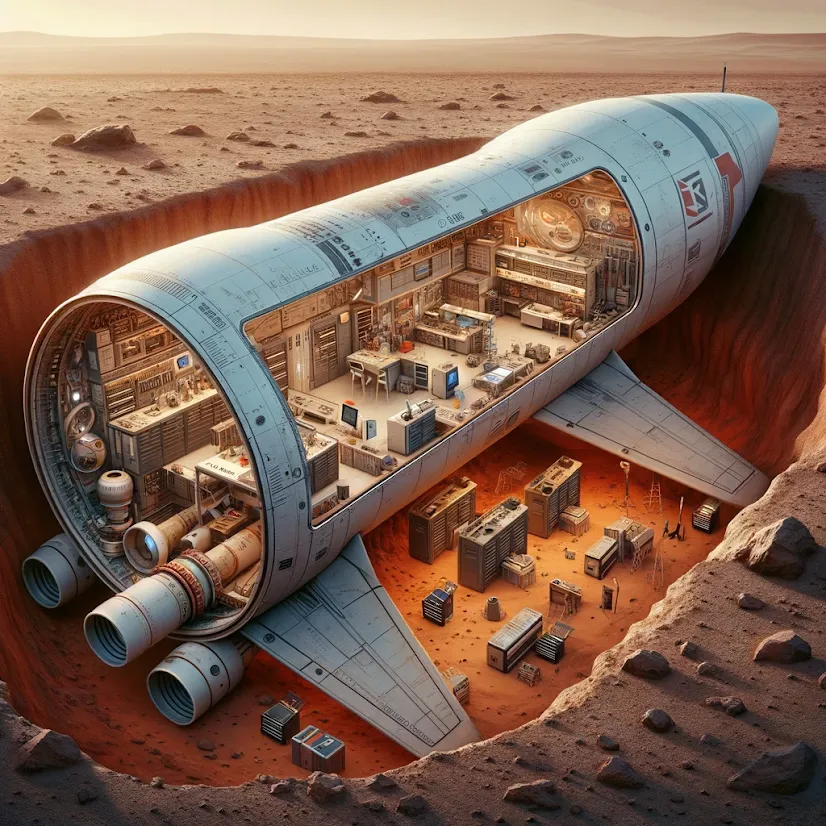
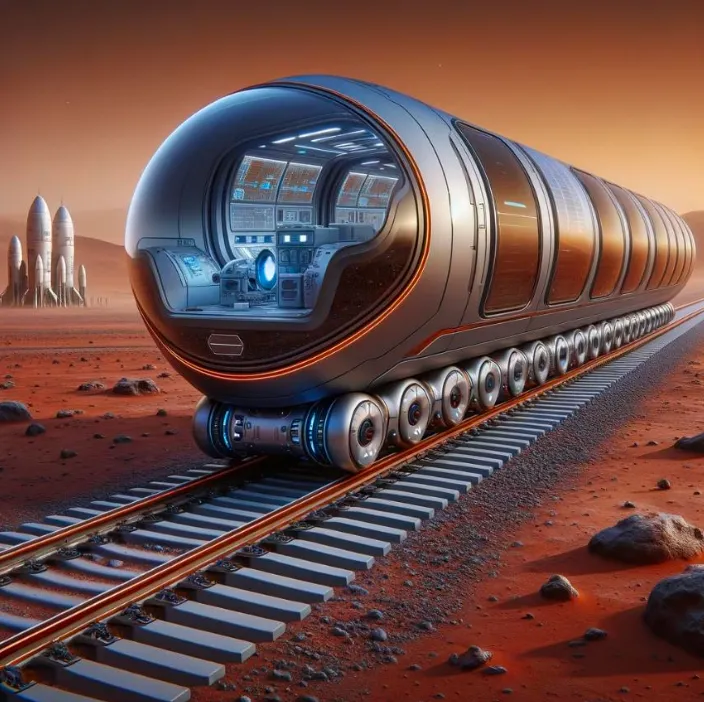
- Health and Safety: Responsible for preparing and providing emergency services for the inhabitants.

-
Human Services and Recreation: Focused on implementing programs to foster individual and community mental health and recreation.
-
Nutrition and Agriculture: Managed sustainable food production systems.
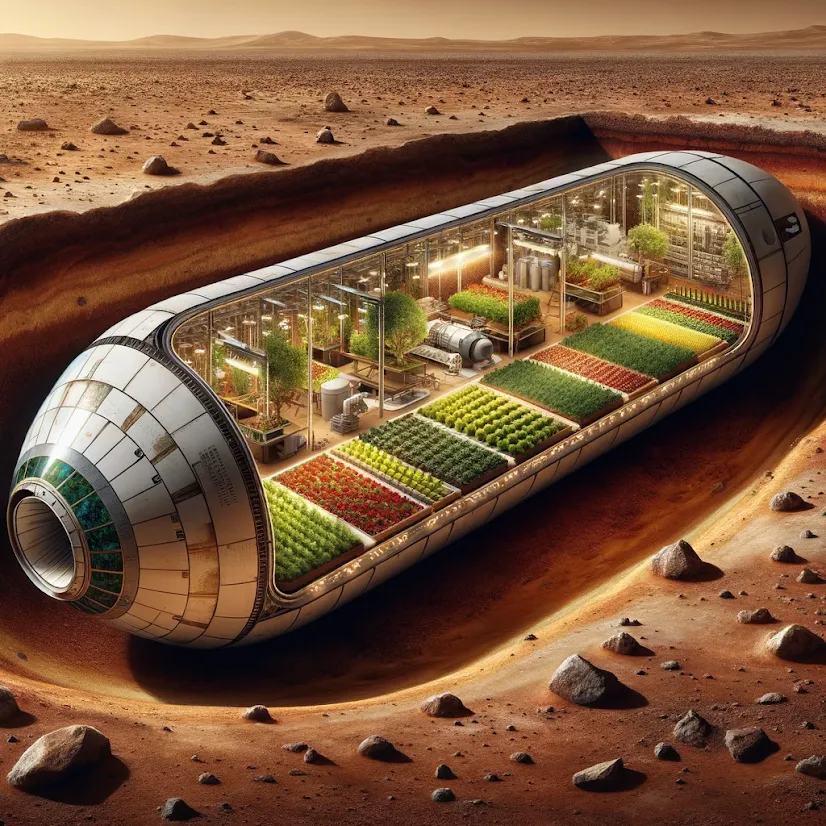
- Resource Development and Management: Handled raw resources and infrastructure support.
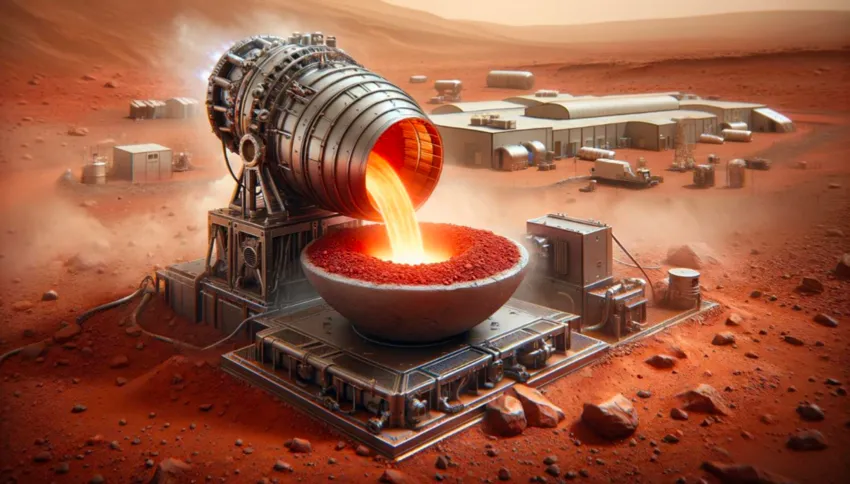
- Structure and Suit Design: Designed protective suits and habitats to withstand Mars’ harsh conditions.

Read The Life on Mars Whitepaper
In just 29 hours, each team had to create a scientifically professional presentation detailing their contributions to both the team’s mission objectives and the overall success of the colony. Our collective efforts were tested through multiple emergencies, including dust storms, equipment malfunctions, and habitat pressure seal leaks, all of which required immediate and collaborative problem-solving.
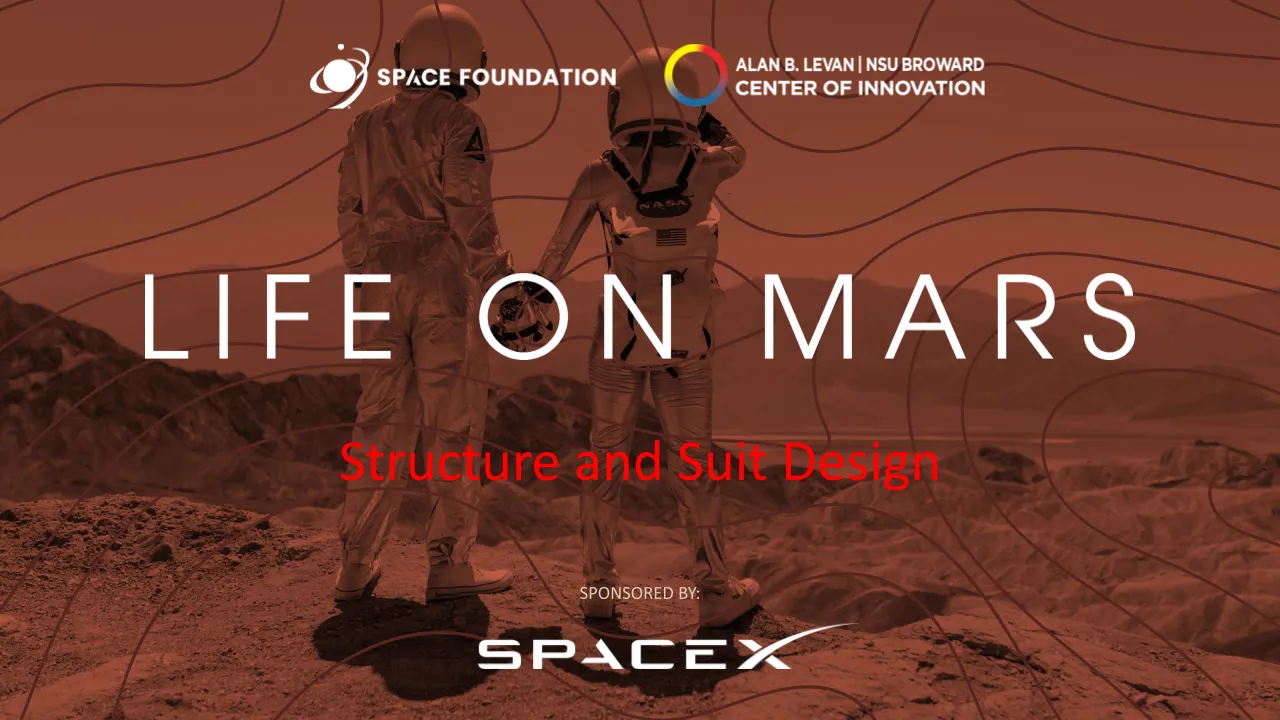

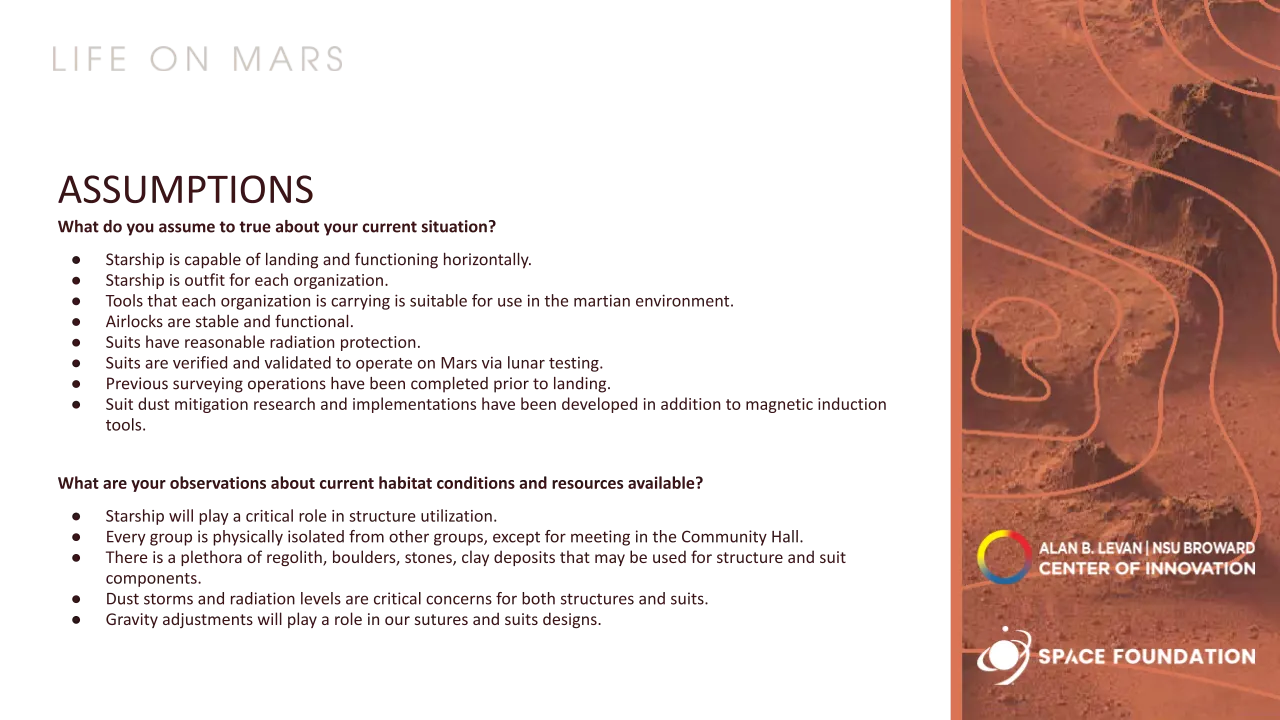
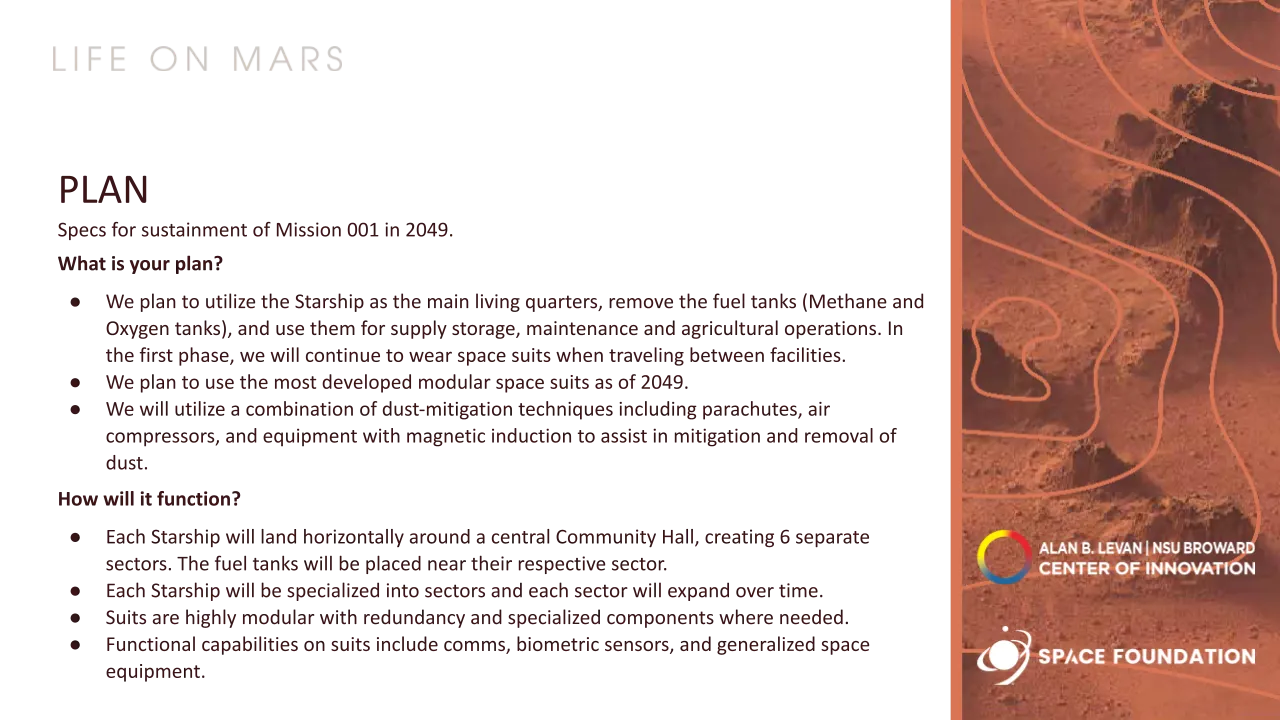
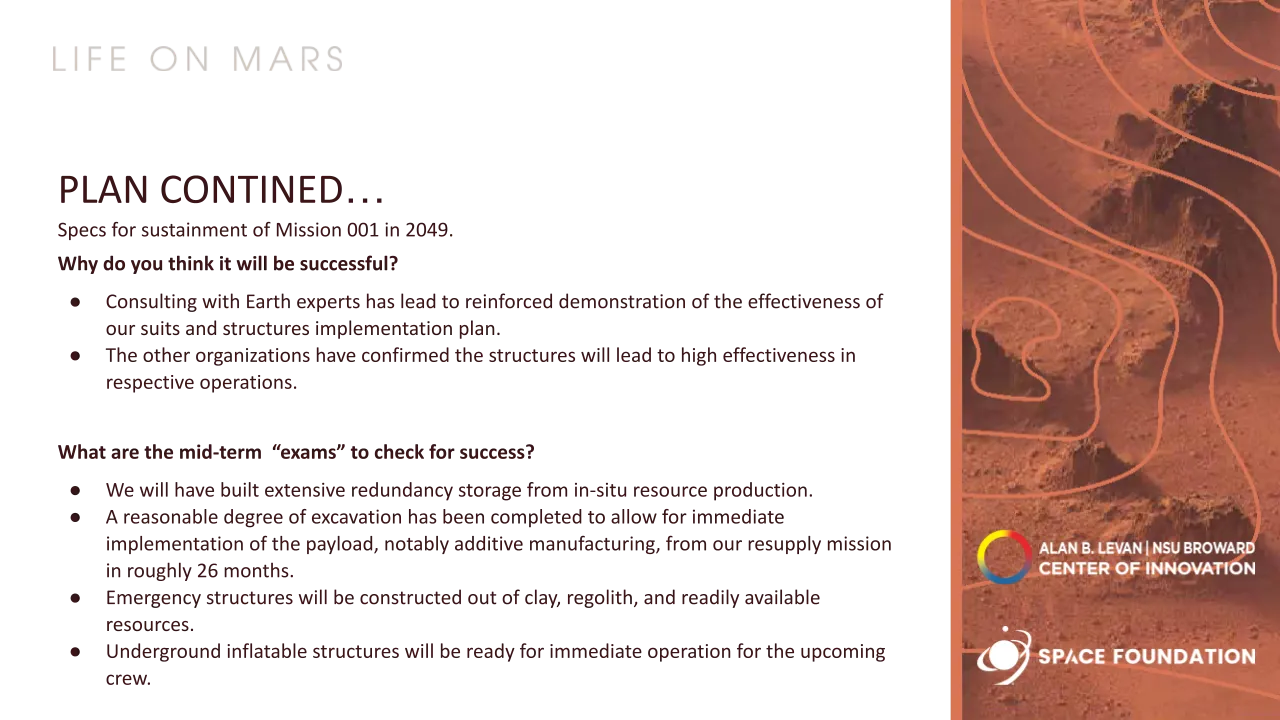
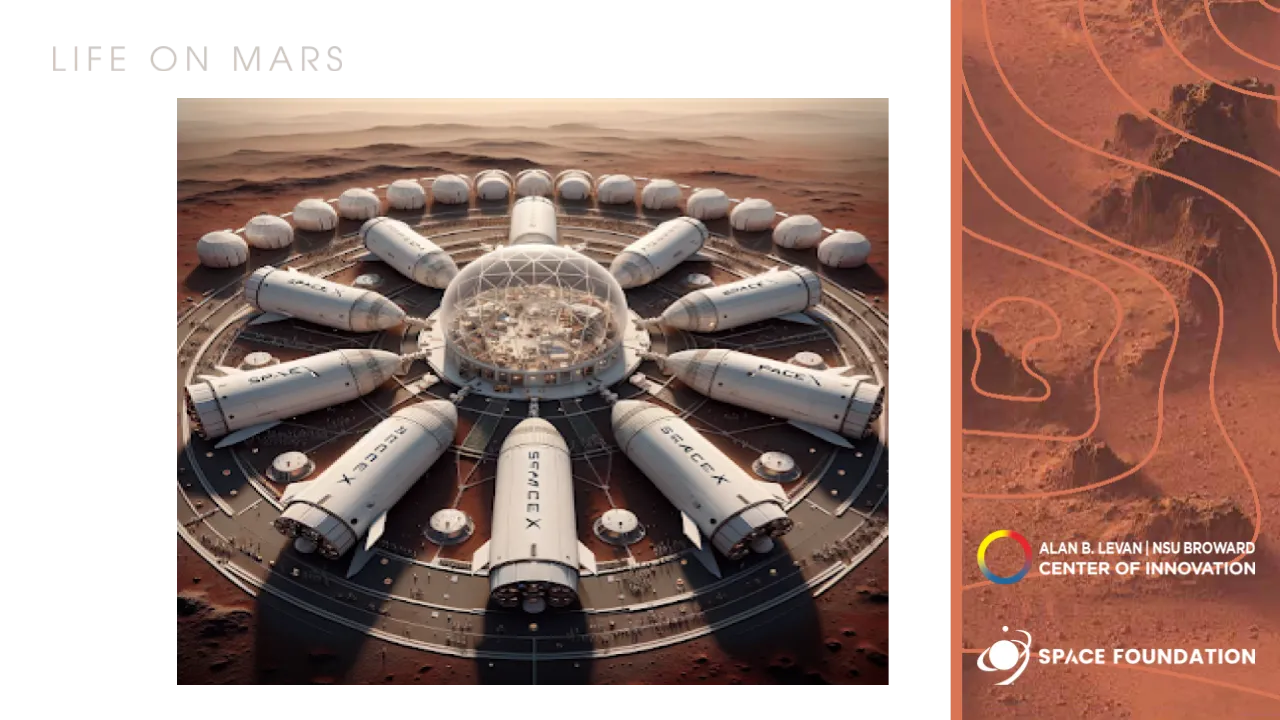

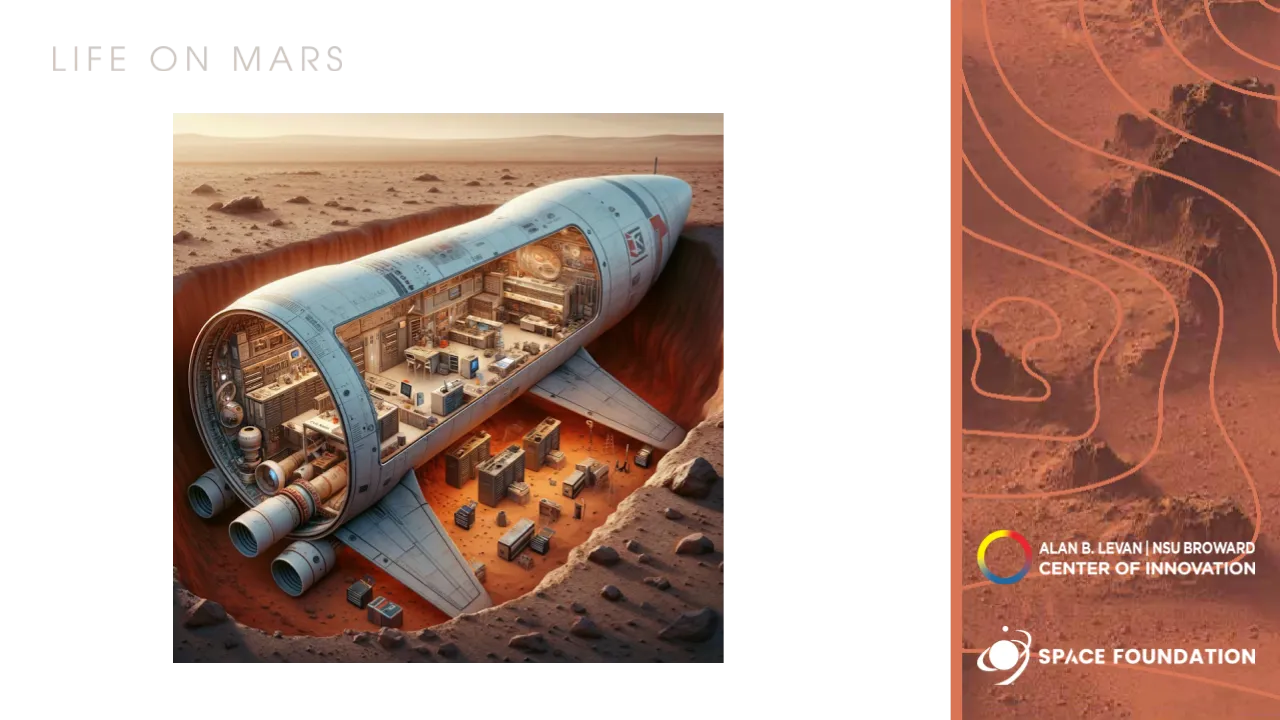
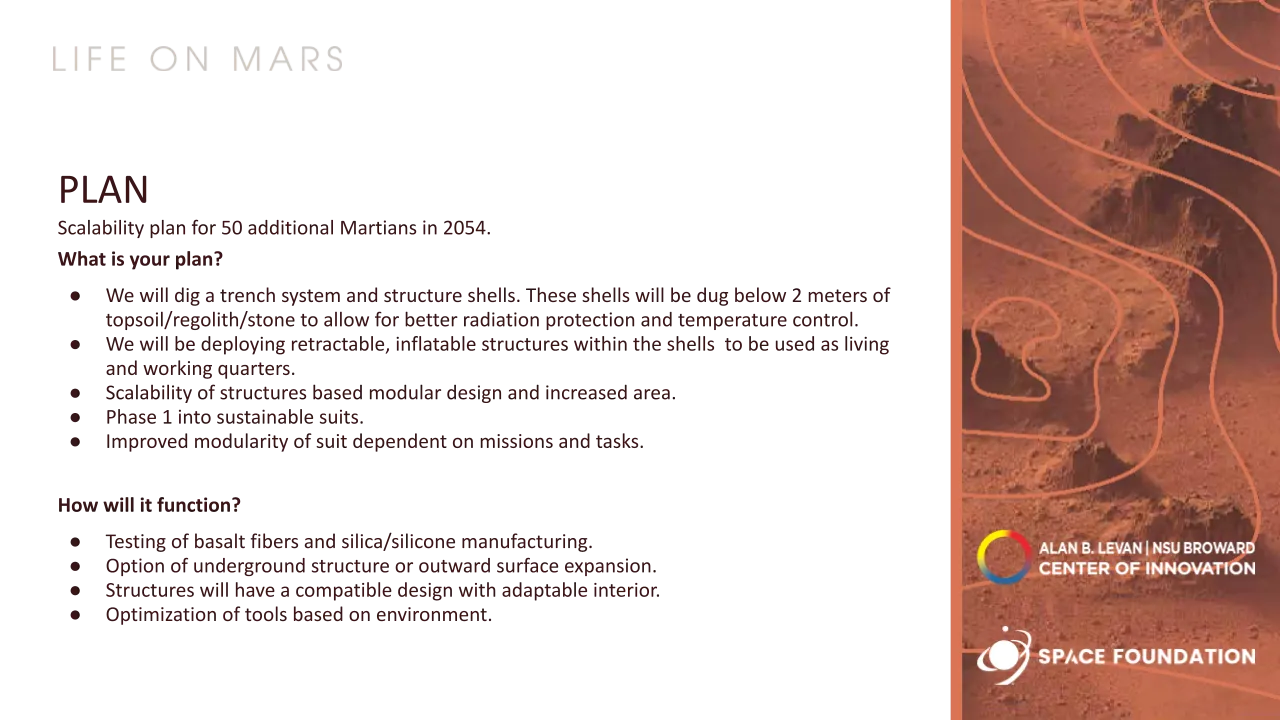
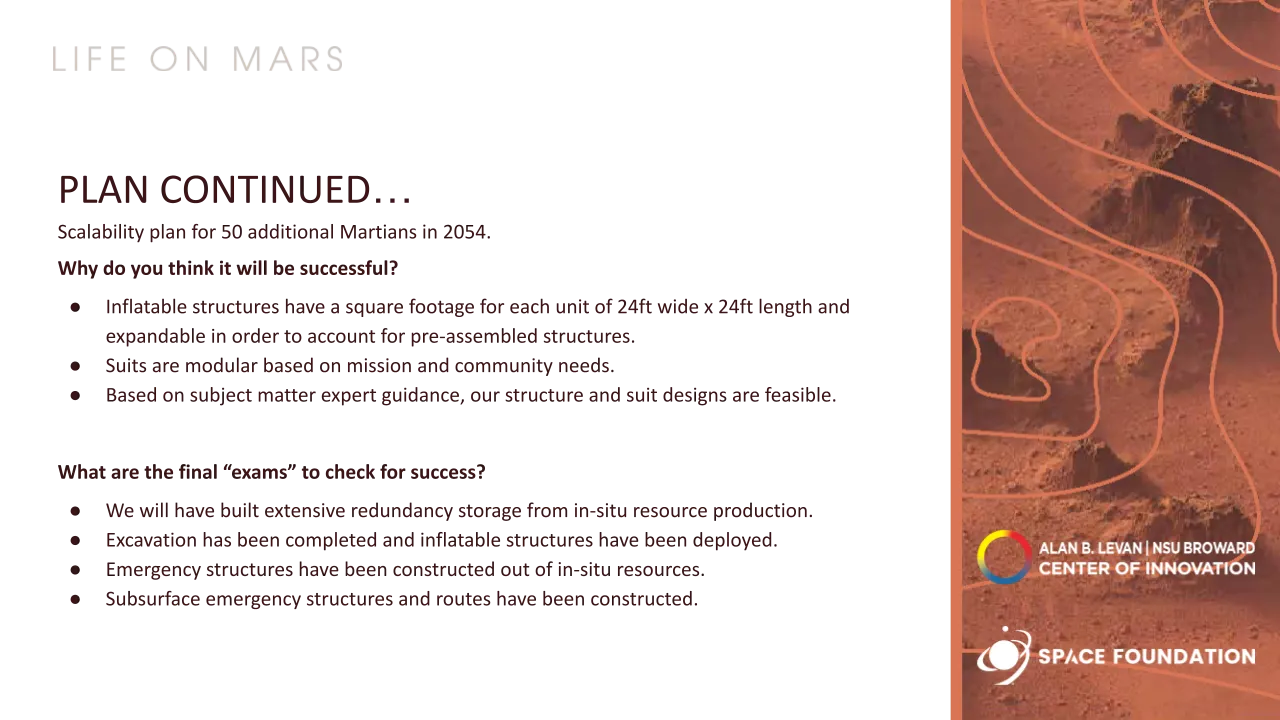

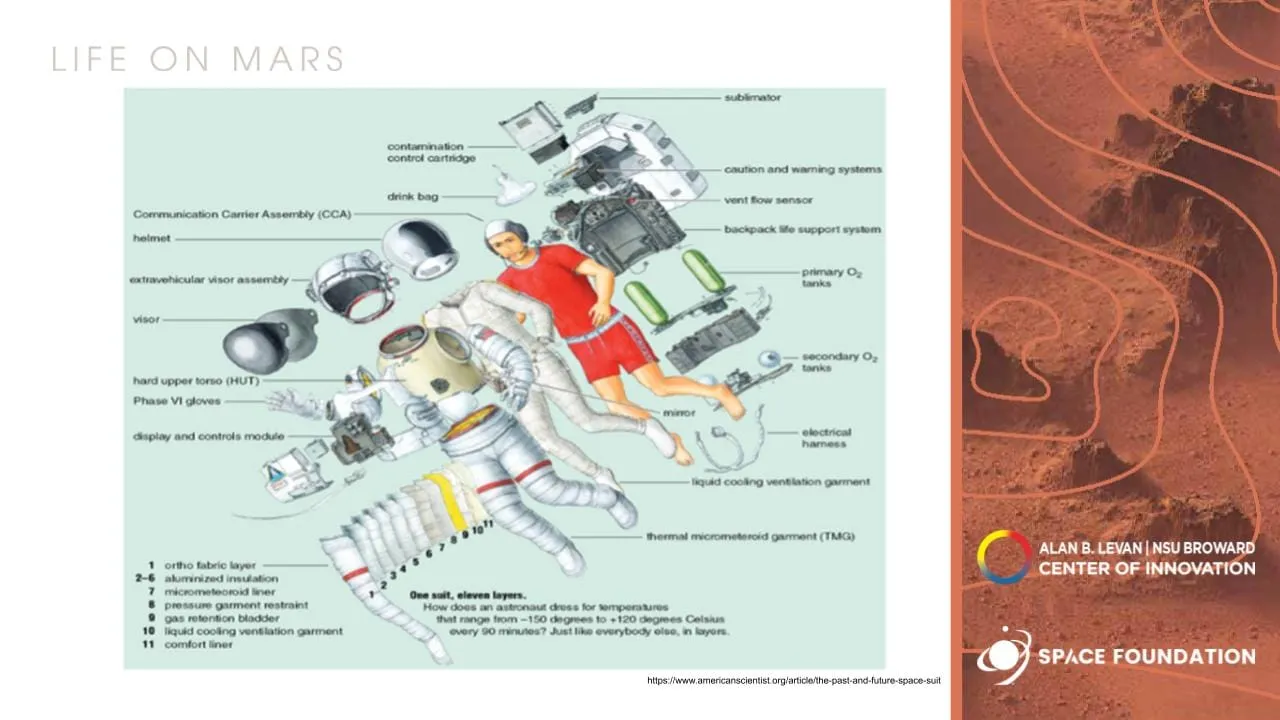
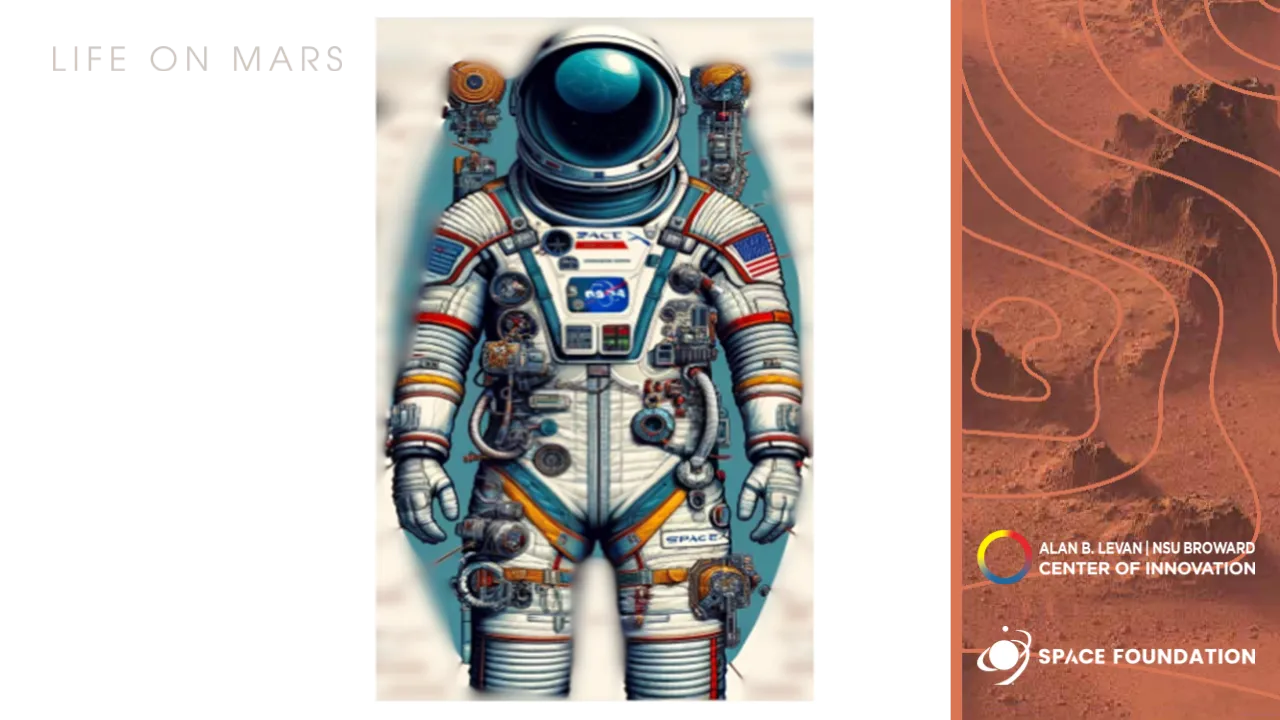
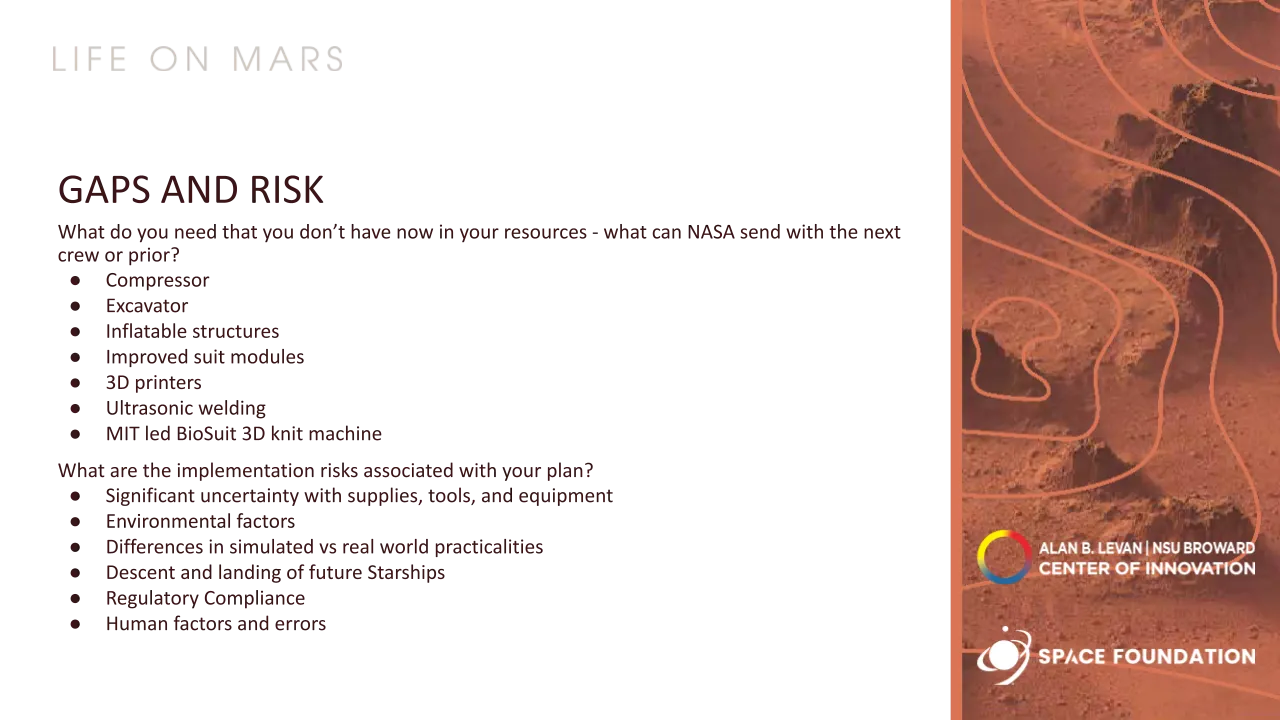
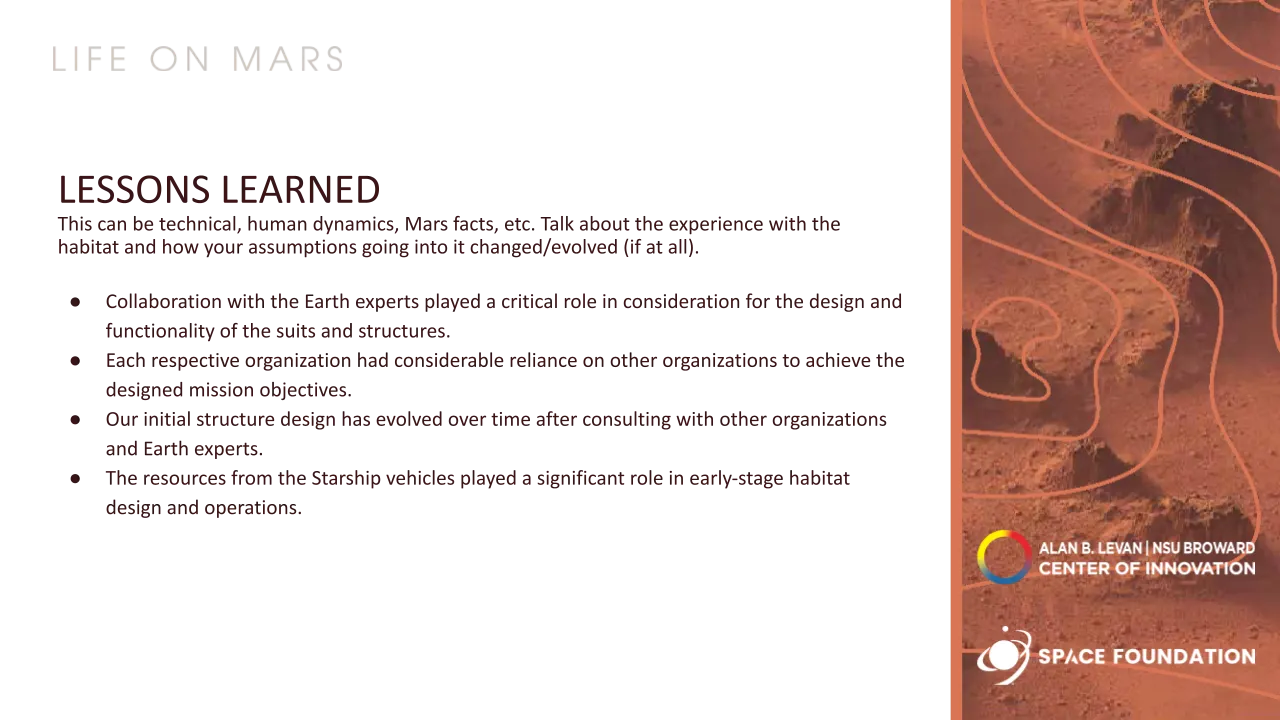
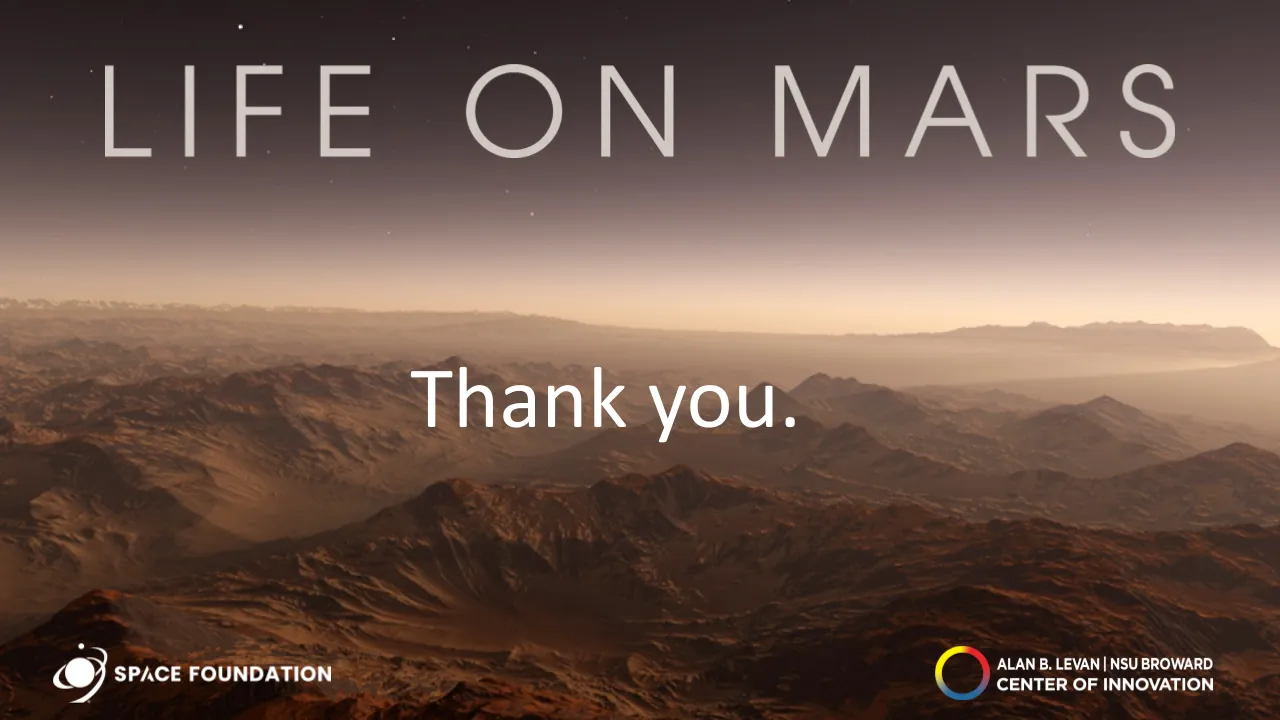
The Structure and Suit Design Team
As a member of the Structure and Suit Design team, our mission was to design and source materials for the protective suits and habitats necessary to sustain life on Mars. We also provided visual representations of the habitat’s structure and its relative location to other community operations and facilities.
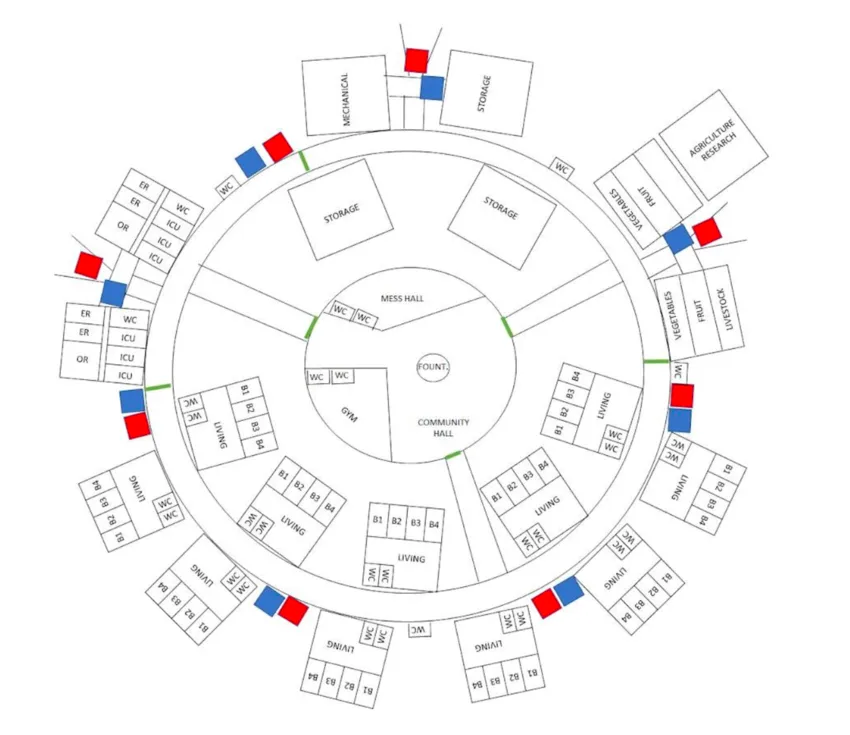
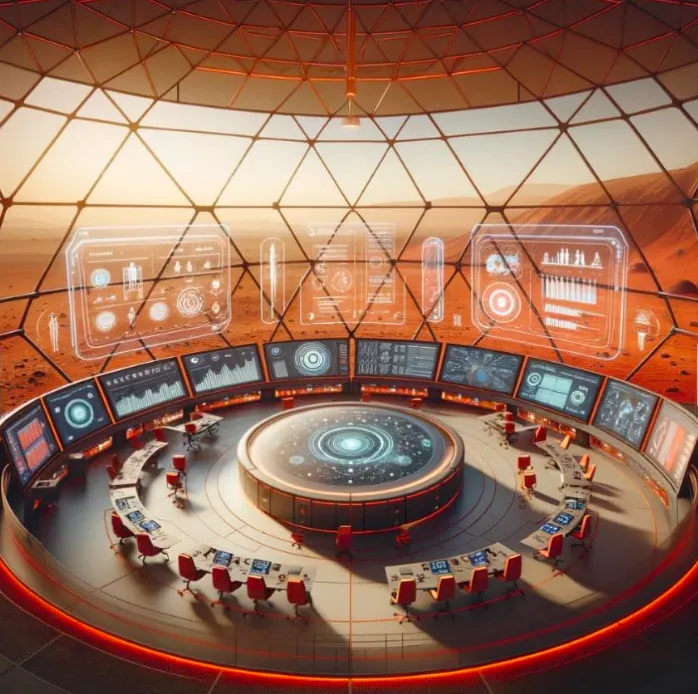
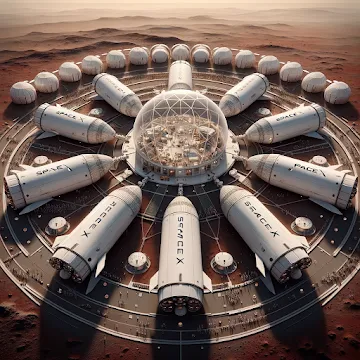
Assumptions and Observations
Before landing, we operated on several key assumptions:
-
The Starship is capable of landing and functioning horizontally.
-
Each organization’s tools are suitable for use in the Martian environment.
-
Airlocks are stable and functional.
-
Suits offer reasonable radiation protection and are validated for Mars via lunar testing.
-
Prior surveying operations were completed before landing.
-
Dust mitigation research and tools are developed.
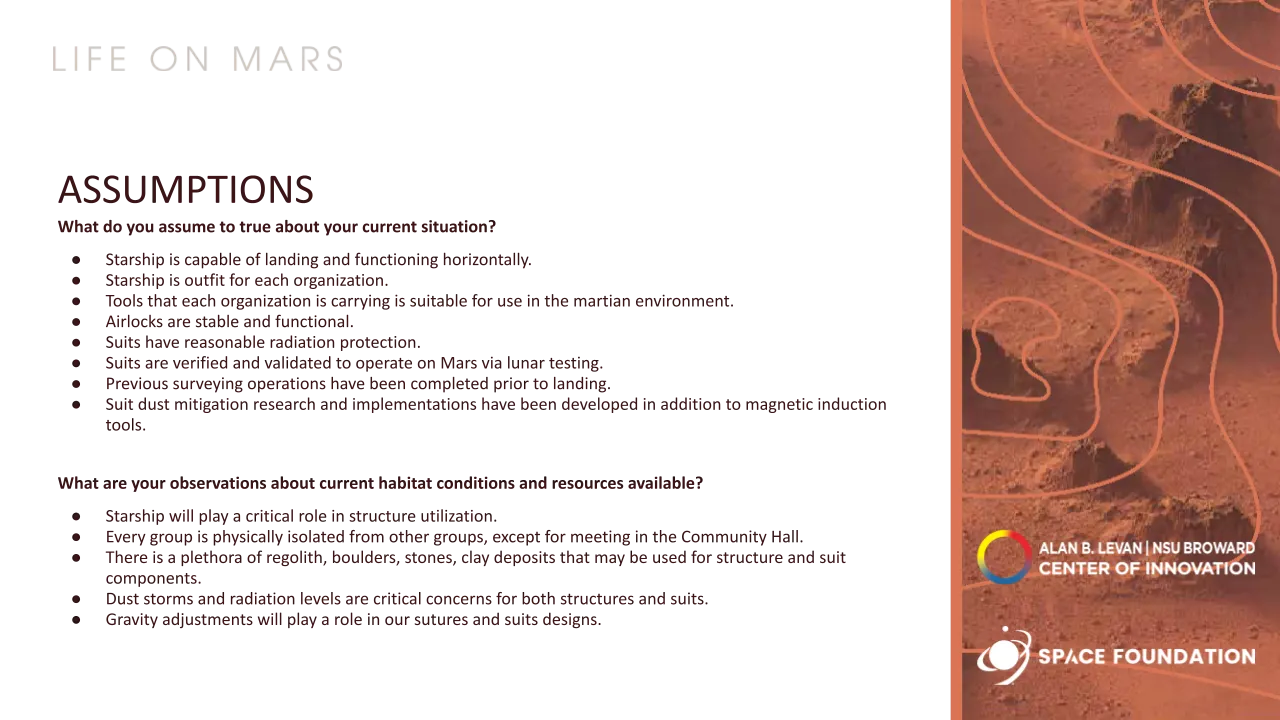
Upon arrival, our observations included:
-
Starship will play a critical role in structure utilization.
-
Each group is physically isolated from the others, except for meetings in the Community Hall.
-
There is a plethora of regolith, boulders, stones, and clay deposits available for construction.
-
Dust storms and radiation levels are critical concerns.
-
Gravity adjustments will impact our suits and structure designs.
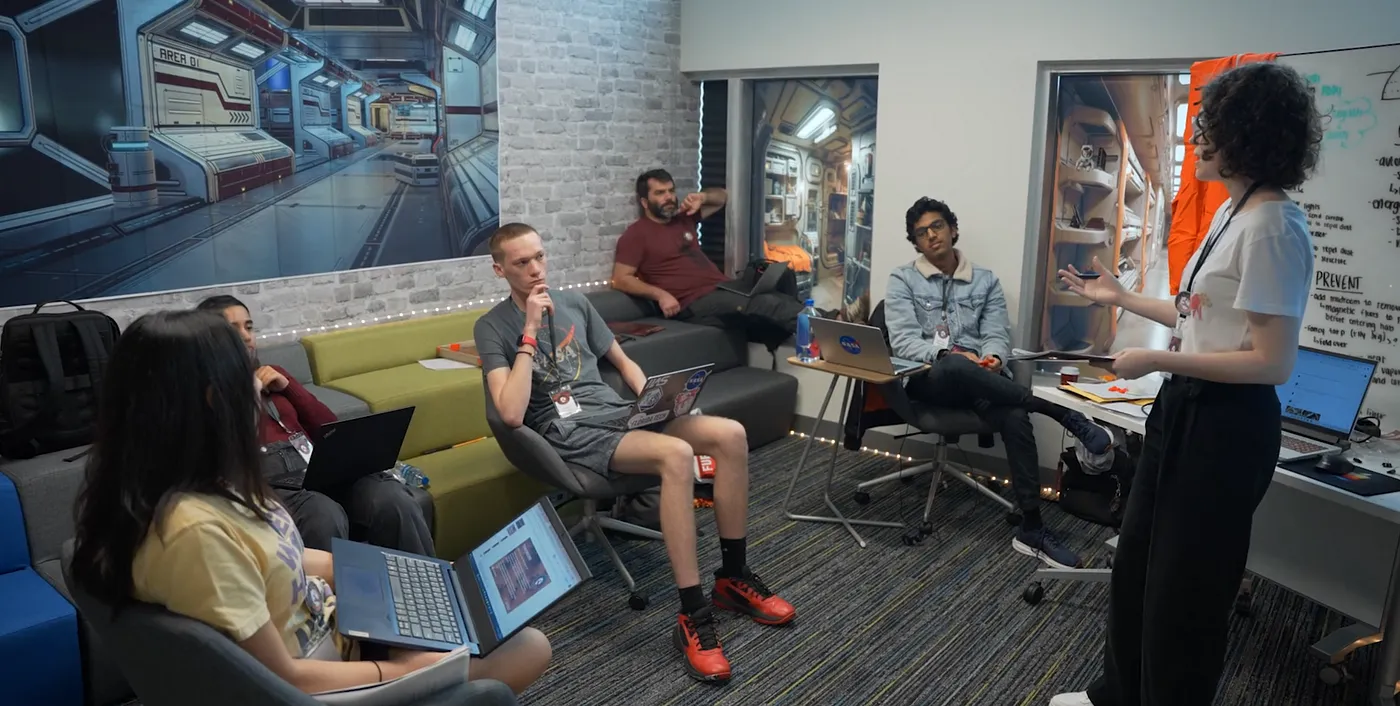
Challenges and Solutions
Technical Challenges:
-
Supply deficit, particularly in construction machinery and processing equipment.
-
Substantial concerns with dust mitigation.
-
Environmental levels (radiation, temperature, pressure, gravity) posed significant challenges.
Team Challenges:
-
Miscommunication between organizations and allocation of mission parameters.
-
Maintaining focus on mission objectives.
-
Gaps in team knowledge and expertise.
To address these challenges, our plan for Mission 001 in 2049 included:
-
Utilizing the Starship as the main living quarters, with fuel tanks repurposed for storage, maintenance, and agricultural operations.
-
Wearing space suits when traveling between facilities in the initial phase.
-
Employing modular space suits with dust-mitigation techniques such as parachutes, air compressors, and magnetic induction tools.
-
Landing each Starship horizontally around a central Community Hall, creating six sectors, each with specialized roles and expandable over time.
-
Ensuring suits were highly modular with redundancy and specialized components where needed, including communication, biometric sensors, and generalized space equipment.
Long-term Plans and Scalability
For the sustained success of Mission 001 in 2049 and beyond, we developed a comprehensive plan:
-
Building trench systems and structure shells below 2 meters of topsoil/regolith/stone to provide better radiation protection and temperature control.
-
Deploying retractable, inflatable structures within these shells for living and working quarters.
-
Ensuring scalability of structures based on modular design and increased area.
-
Utilizing basalt fibers and silica/silicone manufacturing for structure construction.
-
Maintaining compatibility with adaptable interior designs to optimize tools based on environmental conditions.
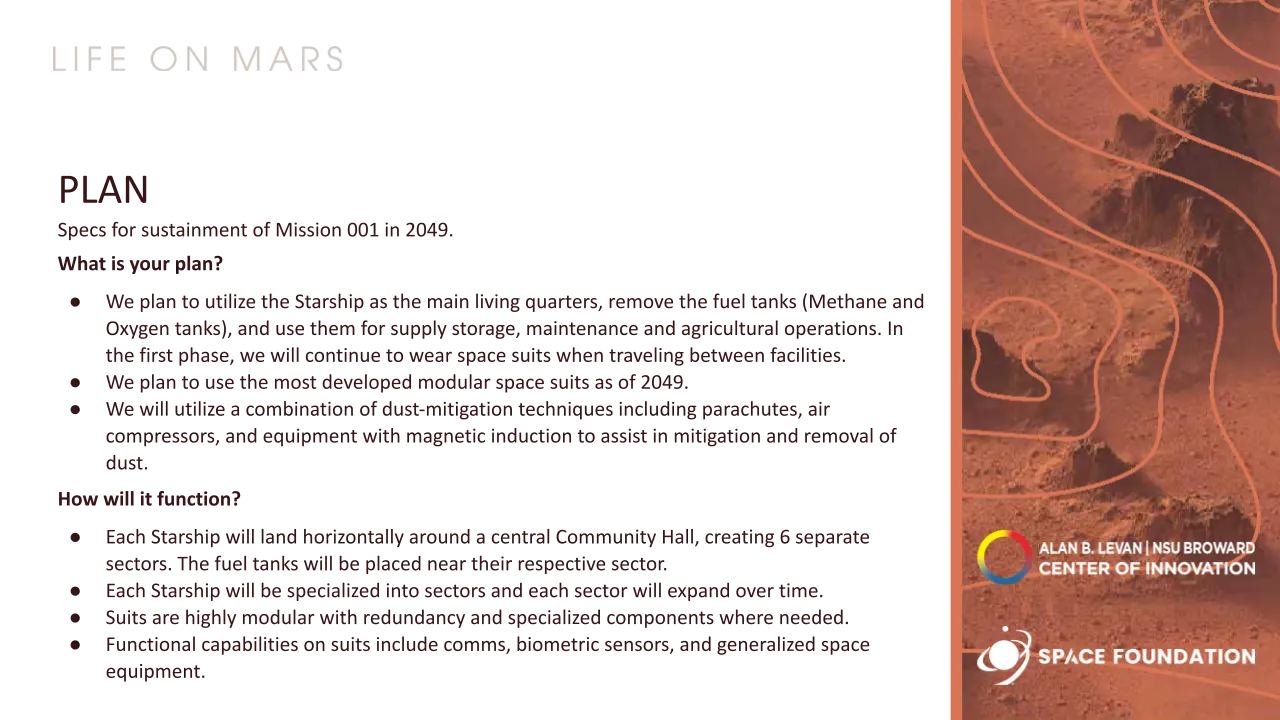
Our scalability plan for accommodating 50 additional Martians in 2054 involved:
-
Extensive redundancy storage from in-situ resource production.
-
Excavation completed to allow immediate implementation of payload, notably additive manufacturing, from our resupply mission in roughly 26 months.
-
Construction of emergency structures out of clay, regolith, and readily available resources.
-
Deployment of underground inflatable structures for immediate operation for the upcoming crew.
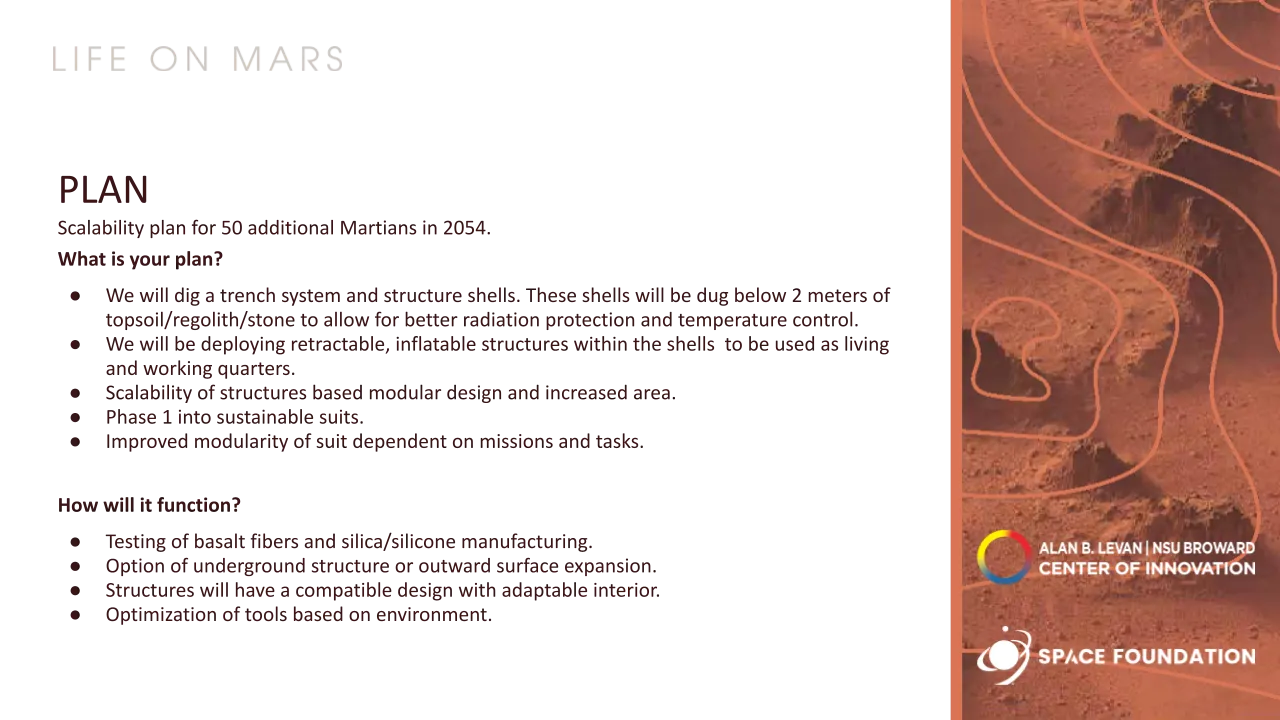
Success Indicators and Resource Needs
To ensure our plan’s success, we established several mid-term and final “exams”:
-
Building extensive redundancy storage from in-situ resource production.
-
Completing excavation and deploying inflatable structures.
-
Constructing emergency structures out of in-situ resources.
-
Constructing subsurface emergency structures and routes.
However, we identified a need for additional resources from NASA for future missions:
-
Compressors
-
Excavators
-
Inflatable structures
-
Improved suit modules
-
3D printers
-
Ultrasonic welding equipment
-
MIT-led BioSuit 3D knit machines
Implementation Risks
We also acknowledged significant implementation risks, including:
-
Uncertainties with supplies, tools, and equipment.
-
Environmental factors.
-
Differences between simulated and real-world practicalities.
-
Descent and landing of future Starships.
-
Regulatory compliance.
-
Human factors and errors.
Reflections and Evolution
Our collaboration with Earth experts played a critical role in refining the design and functionality of our suits and structures. The reliance on other organizations to achieve our mission objectives underscored the importance of interdependence and teamwork. Consulting with experts and other teams led to the evolution of our initial structure designs, adapting them to better meet the mission’s needs.
The resources from the Starship vehicles were crucial in the early stages of habitat design and operations. This simulation experience taught us invaluable lessons about preparation, adaptability, and the collaborative spirit necessary for overcoming obstacles and ensuring the survival and success of a future Mars mission.

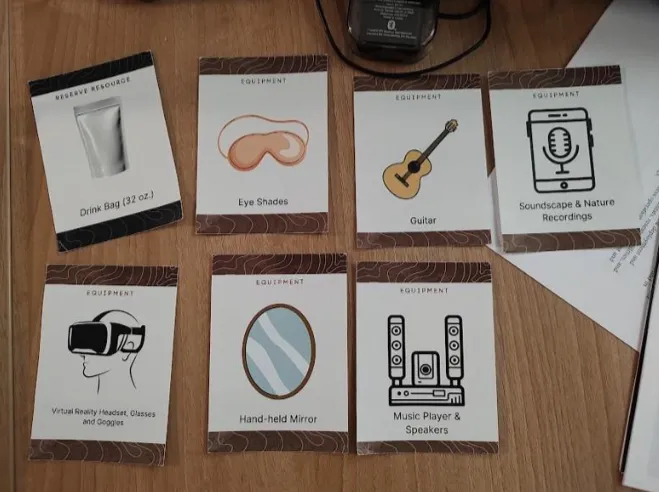
Images of the “Cargo Item Cards”, the resources in which each team received a random assortment and had to coordinate with other teams(and debate in a few cases) for the best utilization.
NASA L’FAM Meetup
I was able to meet with several other people who also participated in a previous NASA L’SPACE program, outlining the synergies in commitments and activities in aiming to learn more about different aspects of space!
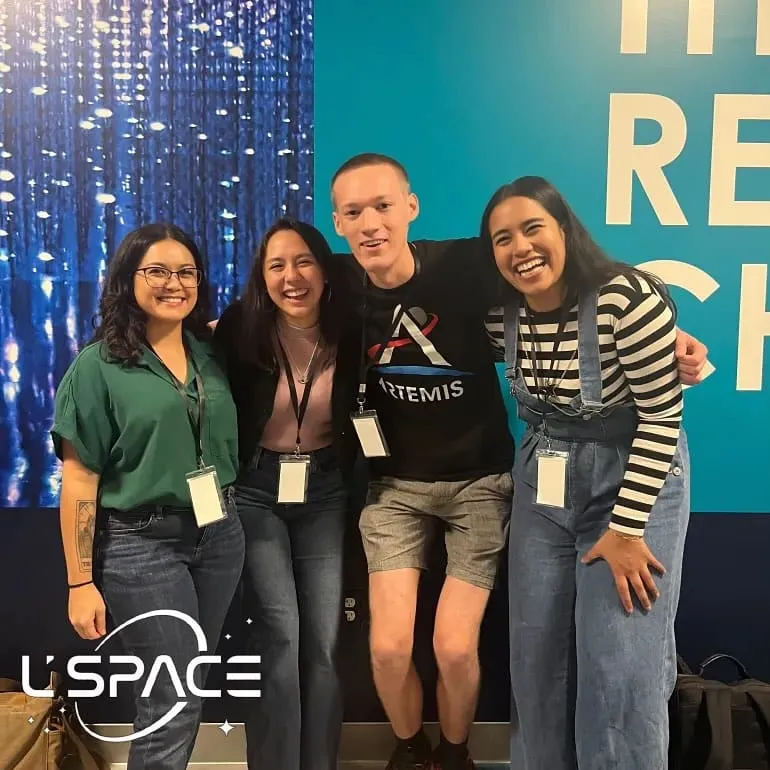
Conclusion
The Life on Mars simulation was an unforgettable journey that demonstrated our collective capability to tackle the immense challenges of establishing a Martian colony. This experience emphasized the significance of teamwork, adaptability, and resourcefulness in the face of adversity. As we move forward, the lessons learned from this simulation will undoubtedly contribute to the realization of humanity’s dream of colonizing Mars. Thank you to everyone who supported and participated in this extraordinary journey.
